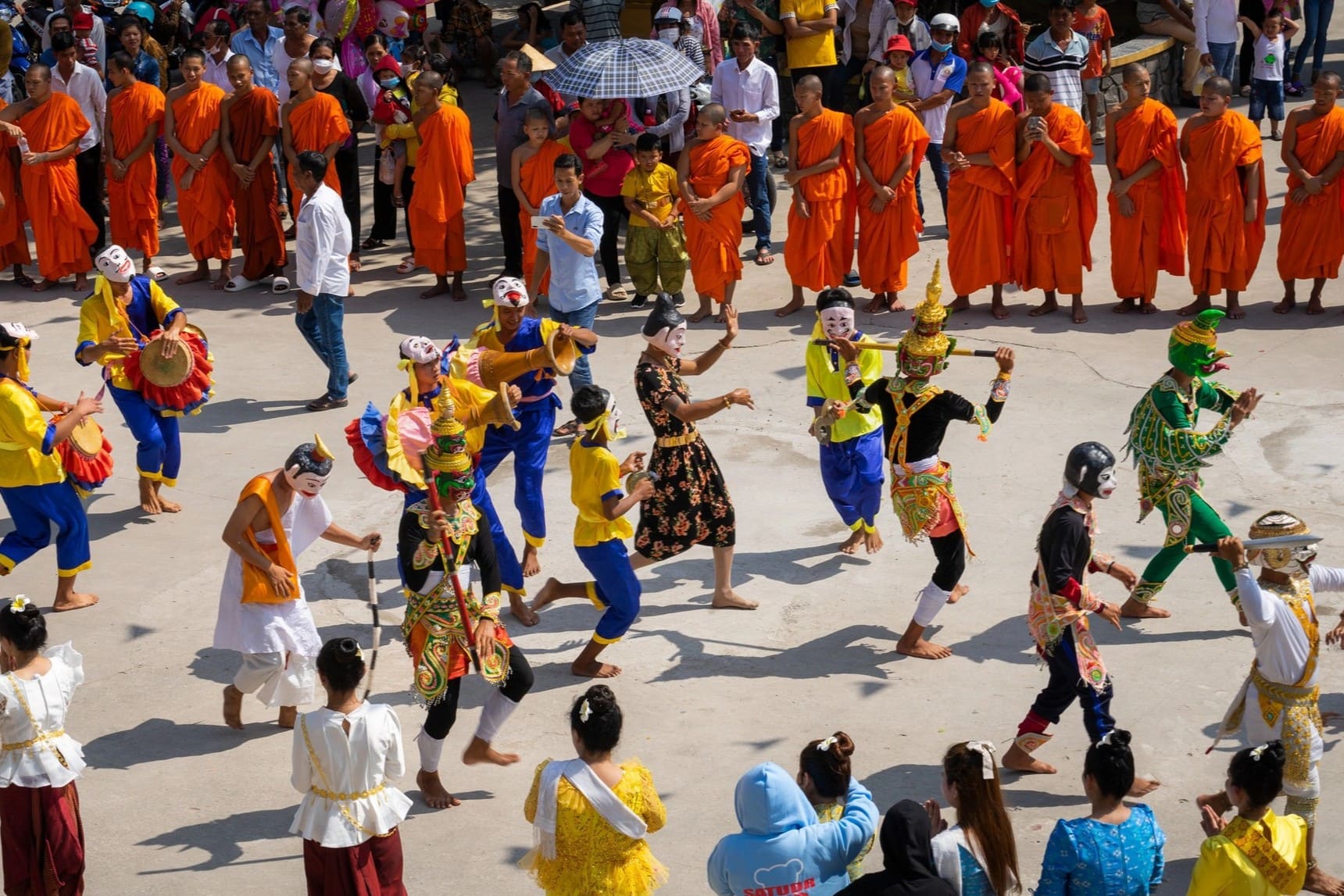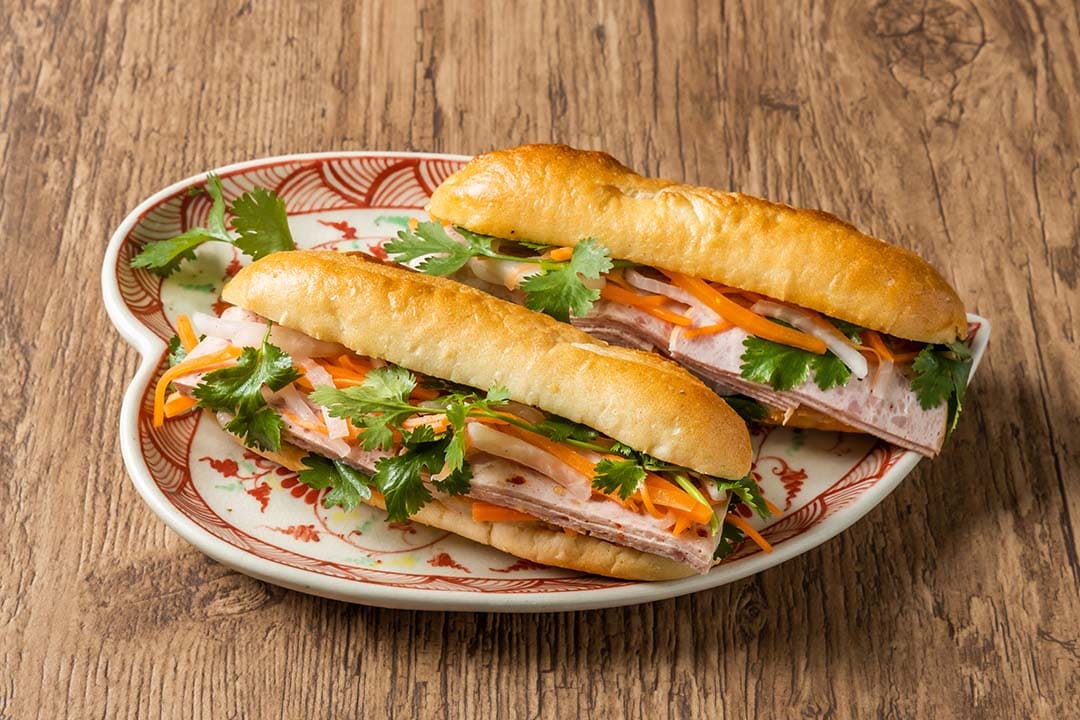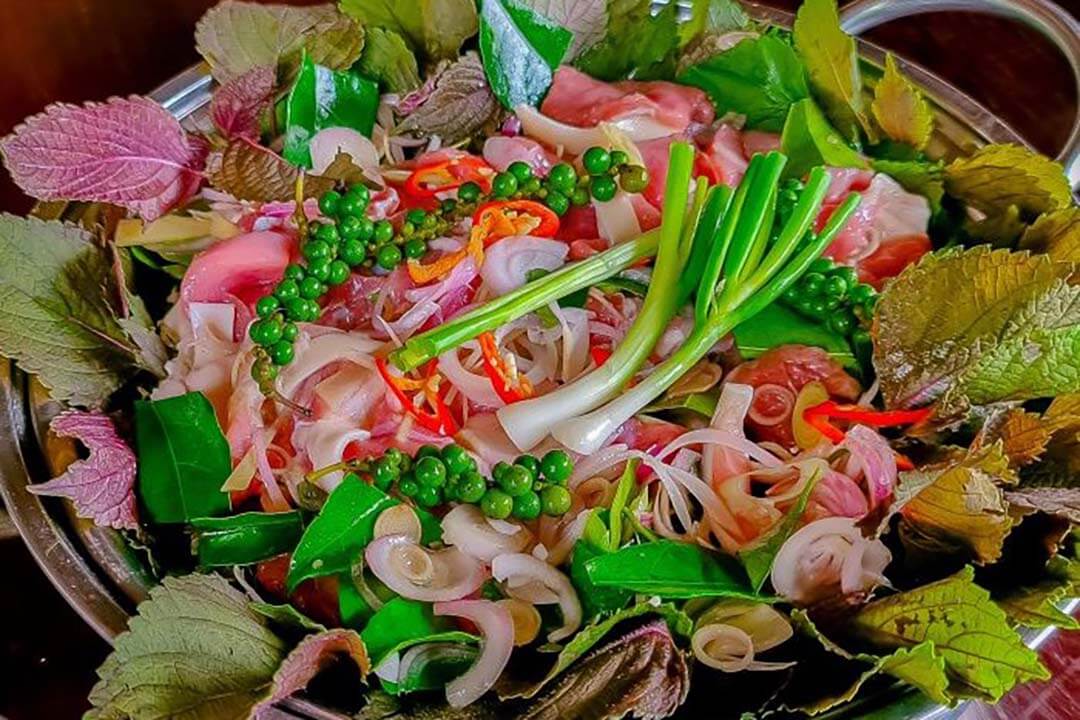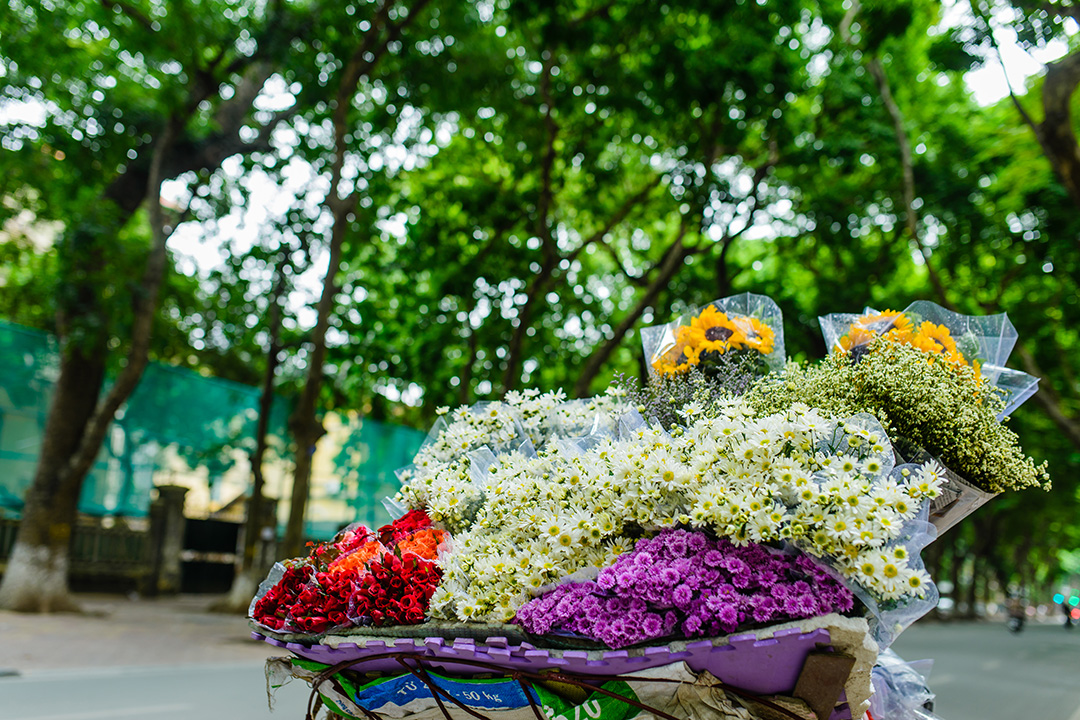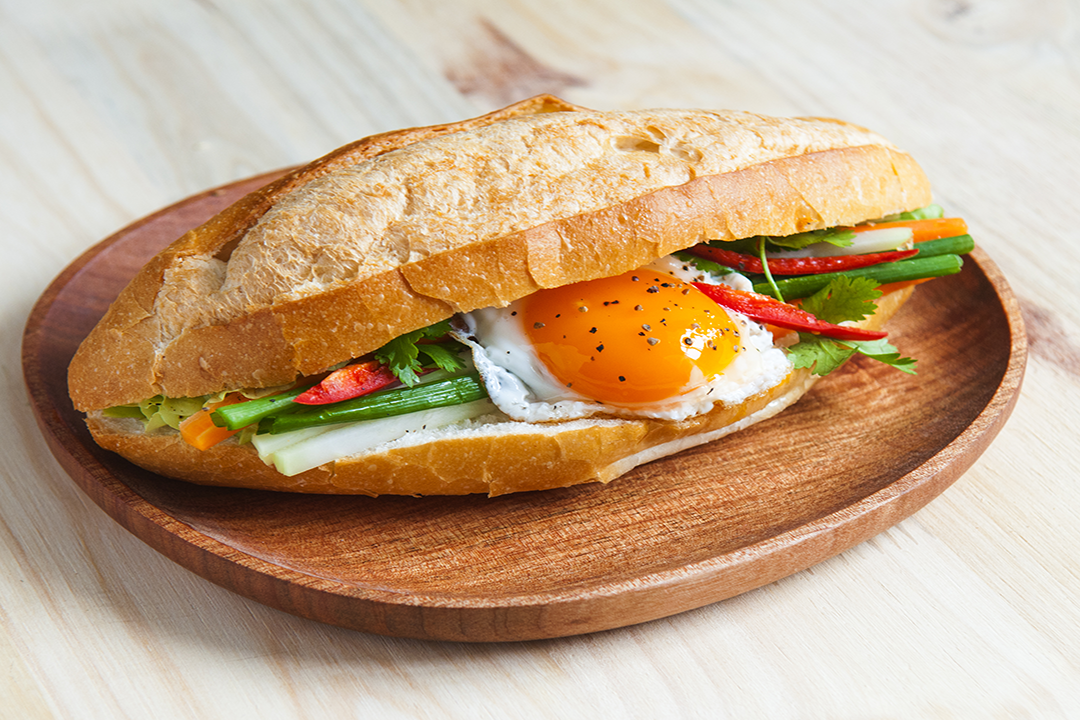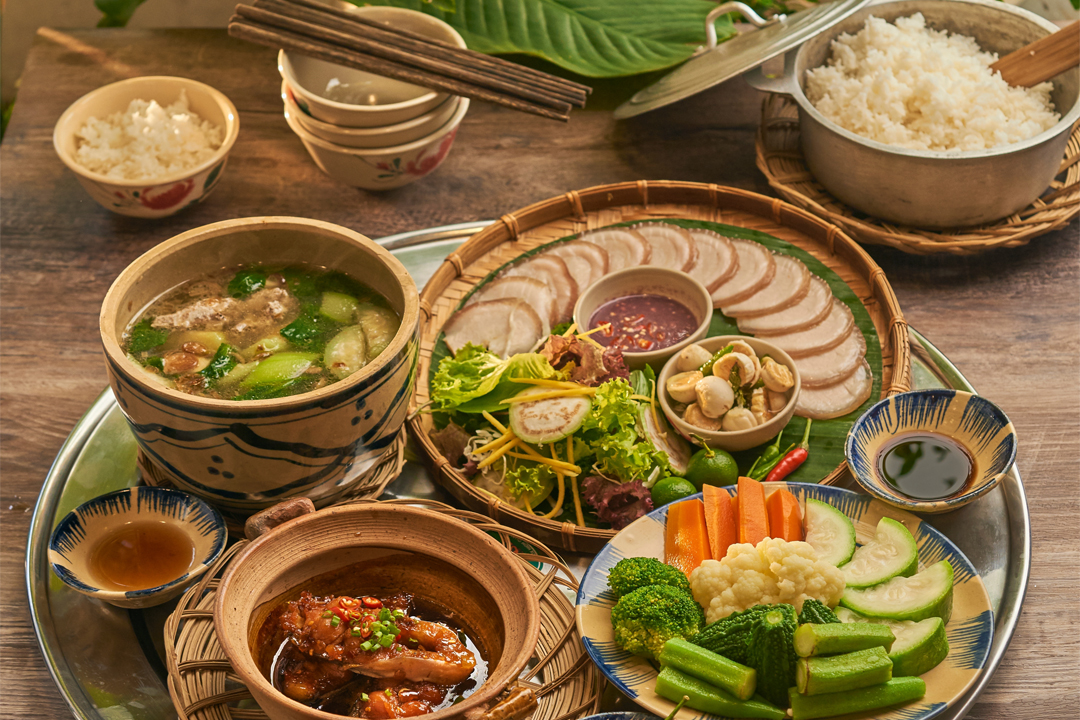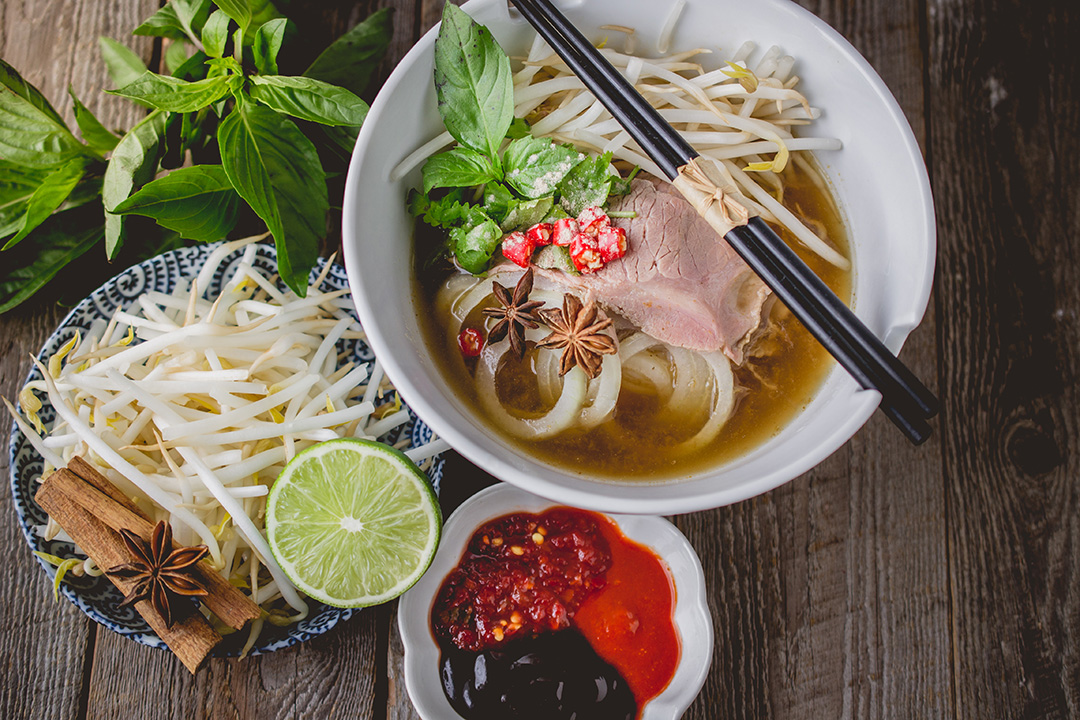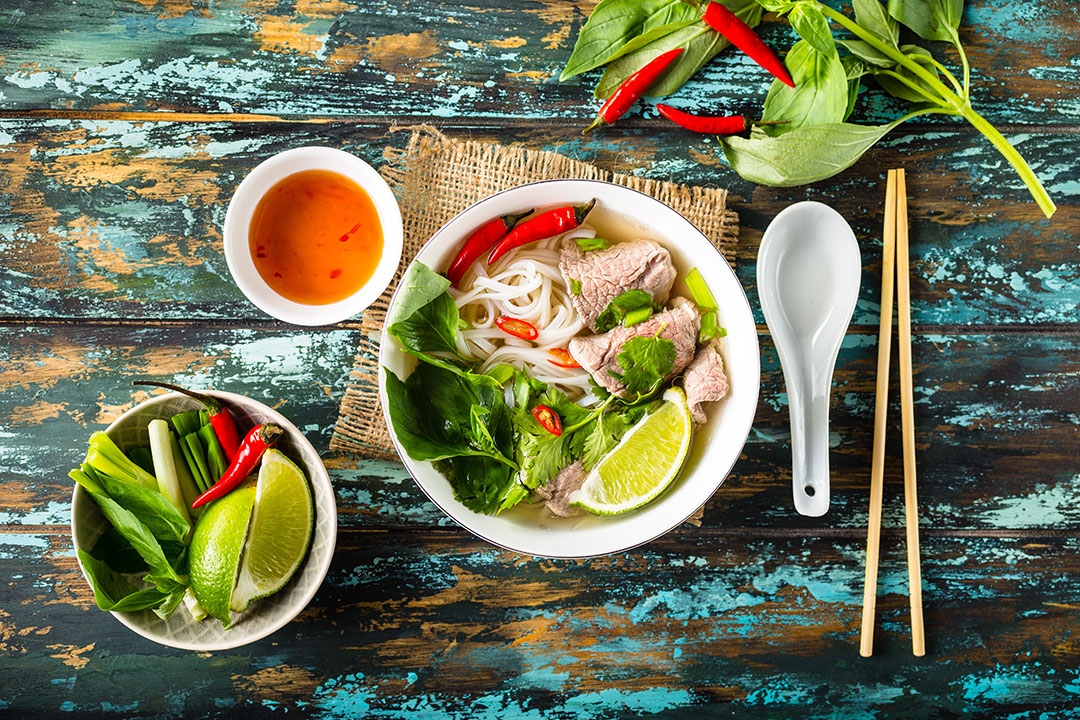Oct - 14 - 2023
Nature has graced Vietnam with a variety of fruits, with each season bringing one or more tropical fruits. Especially during the summer months of May to August each year, visitors will appreciate the Vietnamese fruits that make up the S-shaped strip of land.
Top 10 types of Vietnamese fruits in summer
Vietnamese fruits are not only rich in variety, but their taste also leaves a deep impression in the hearts of foreign tourists.
Durian
Durian, also known as the "King of Fruits" in various Southeast Asian nations, particularly Vietnam, is a well-known fruit for its distinctive perfume and flavor.
The look of durian is similar to that of jackfruit, but the spikes are more giant. The meat within has a custard-like texture that melts on your tongue, unlike the thick and crunchy shell. Durian's taste is a one-of-a-kind blend of sweetness, saltiness, and creaminess.
There are also some good ways to try durian are chè Thái (Thai sweet soup), xôi sầu riêng (durian sticky rice), or pia cake.
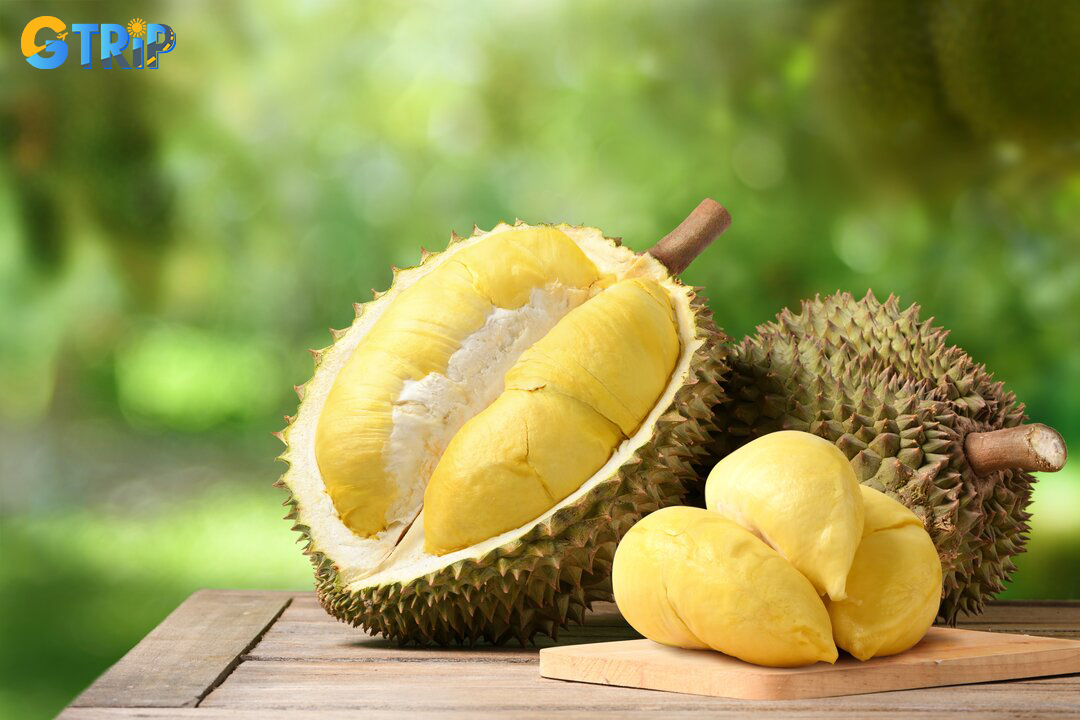
Durian - King of fruits
Soursop (Mãng cầu Xiêm)
Soursop is a fruit known for its excellent perfume and flavor among both Vietnamese and foreigners. Soursops, as opposed to custard apples, are bigger in size, oval in shape, and have a deeper green.
The white flesh inside has a pleasant aroma that is reminiscent of pineapple. Soursop is commonly used to produce fresh smoothies, ice cream, juice, and other desserts because of its sweet and acidic flavor. Soursop tea is gaining popularity in Vietnam since the cold tea taste combined with the gently sour taste of custard-apple is ideal for dispelling summer heat.
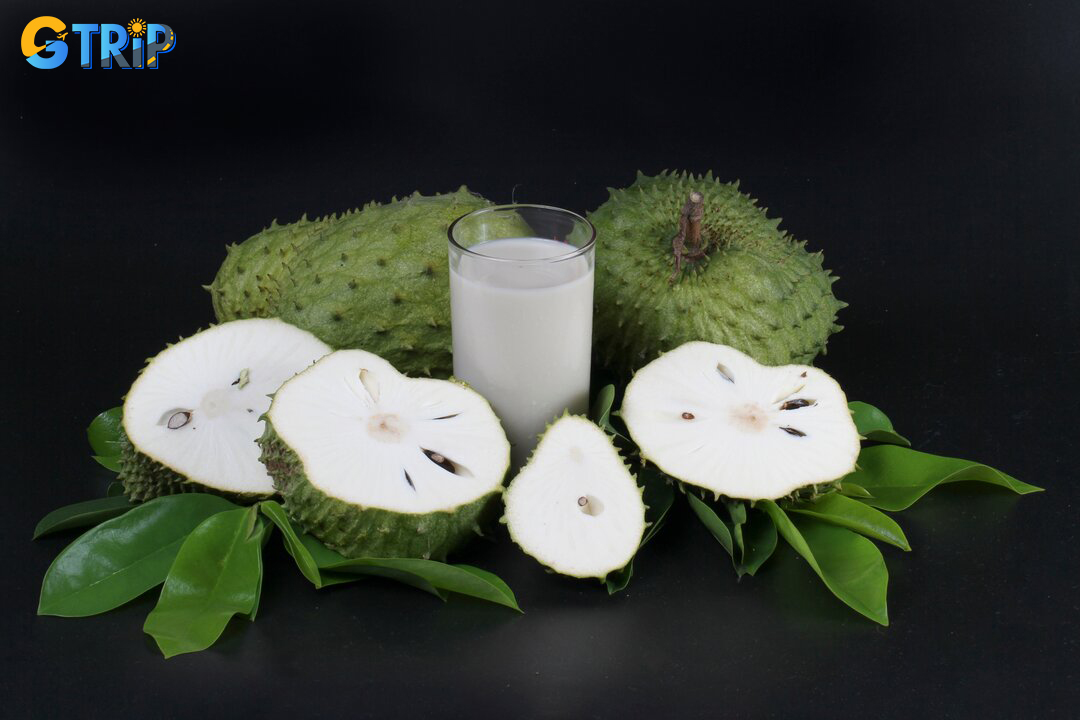
Soursop
Longan
What a snub if we don't mention longan. It's a well-known Vietnamese fruit that's cultivated in places like the Mekong Delta.
Longan is also known as "dragon's eye" in Vietnamese because of its spherical black seed that resembles an eyeball and is surrounded by a mushy, transparent pulp. The pulp has a beautiful sweet flavor and exquisite texture, making it a pleasant summer delicacy. Longan can be enjoyed with a cup of tea or in a chilled sweet soup with lotus seeds (chè hạt sen nhãn lồng) - the ideal summer treat.

Longan
Mangosteen (Măng cụt)
Mangosteen is present exclusively from May through August. Mangosteens are widely available in Vietnamese stores and street sellers.
Mangosteen flesh is separated into segments with or without seeds. These pulps are soft and sweet, with a hint of sourness. You will be completely engrossed in its smoothness and succulence when tasting it. In addition to ripe mangosteen, raw mangosteen is also used in Vietnam to prepare salad with chicken (gỏi gà măng cụt).

Mangosteen chicken salad
Plum (Mận Hà Nội)
Plum, known as Mận Hậu or Mận Hà Nội in Vietnamese. Plums are grown in various regions of Vietnam, including the mountainous areas of the Northwest and Northeast, such as Lao Cai, Son La, and Lai Chau. This Vietnamese fruit is typically harvested from April to early July.
The fruit is known for its vibrant color, juicy flesh, and sweet-sour flavor. One popular way to enjoy plums in Vietnam is by mixing them with chili salt. The plums are chopped into small pieces and seasoned with a teaspoon of chili salt. The mixture is then gently shaken to evenly distribute the flavors.
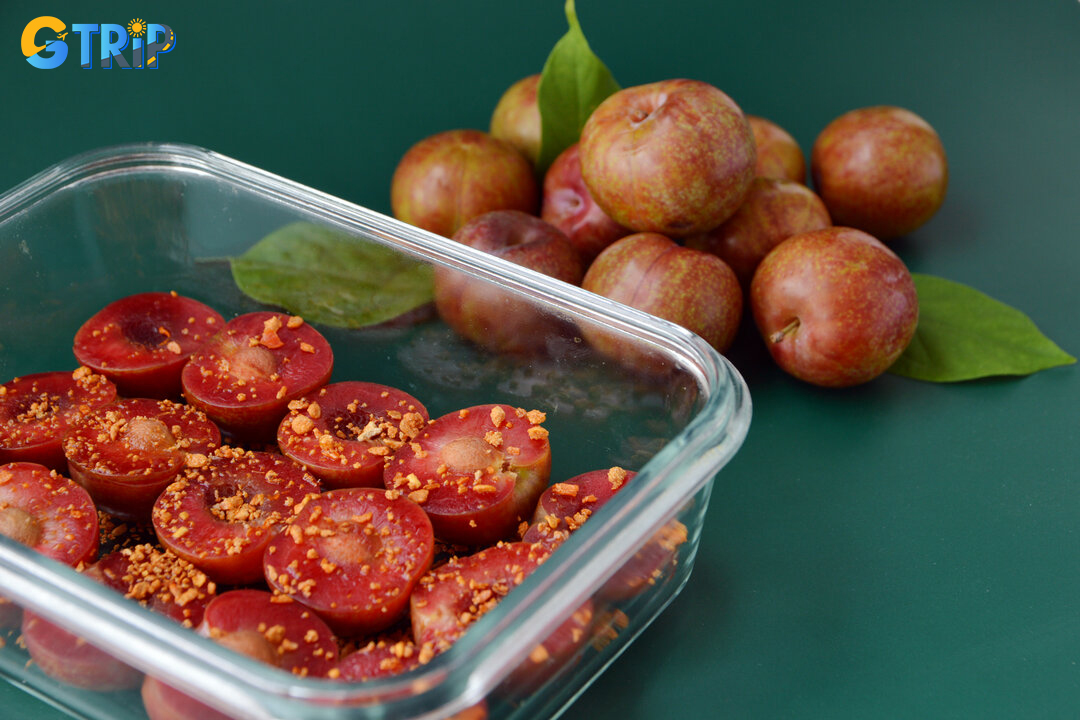
Plum mix with chili salt
Rambutan (Chôm Chôm)
Rambutan is a tropical fruit that holds a special place in Vietnamese agriculture. The rambutan fruit is characterized by its hairy exterior, which starts off green or yellow and turns red as it ripens. This fruit is highly valued not only for its delicious taste but also for its nutritional benefits. Rambutan is enjoyed fresh as a snack or used in various culinary preparations, such as fruit salads, desserts, and beverages.

Rambutan
Avocado
Avocado is a fruit that has gained popularity in Vietnam in recent years. In Vietnam, avocados come in various types, and they are valued for their nutritional benefits. Avocados can be enjoyed in different ways, including being eaten fresh, used in salads, or blended into smoothies. Vietnamese locals have their unique way of enjoying avocados, such as serving them with condensed milk or fish sauce and rice.

Avocado
Lychee
Lychee is one of the most popular Vietnamese fruits in summer. The regions of Hai Duong and Bac Giang are well-known for their excellent lychee varietals.
Lychee is a beautiful spherical fruit with rough crimson or pinkish-red skin. Its center is made up of a rich and delicious pulp that surrounds a hard brown seed. Because of its sweetness and freshness, lychee is one of the most popular fruits in Vietnam throughout the summer.

Lychee
Langsat (bòn bon)
Langsat (bòn bon) fruit is a tropical seedling, grown in most provinces in Vietnam. Bo bon fruit is round, when young, the skin is dark green, when ripe, the skin is bright yellow and smooth. The langsat flesh is opaque white, when ripe, the flesh is almost transparent, divided into small segments. Langsat has a slightly sour taste, when ripe, it is sweeter.
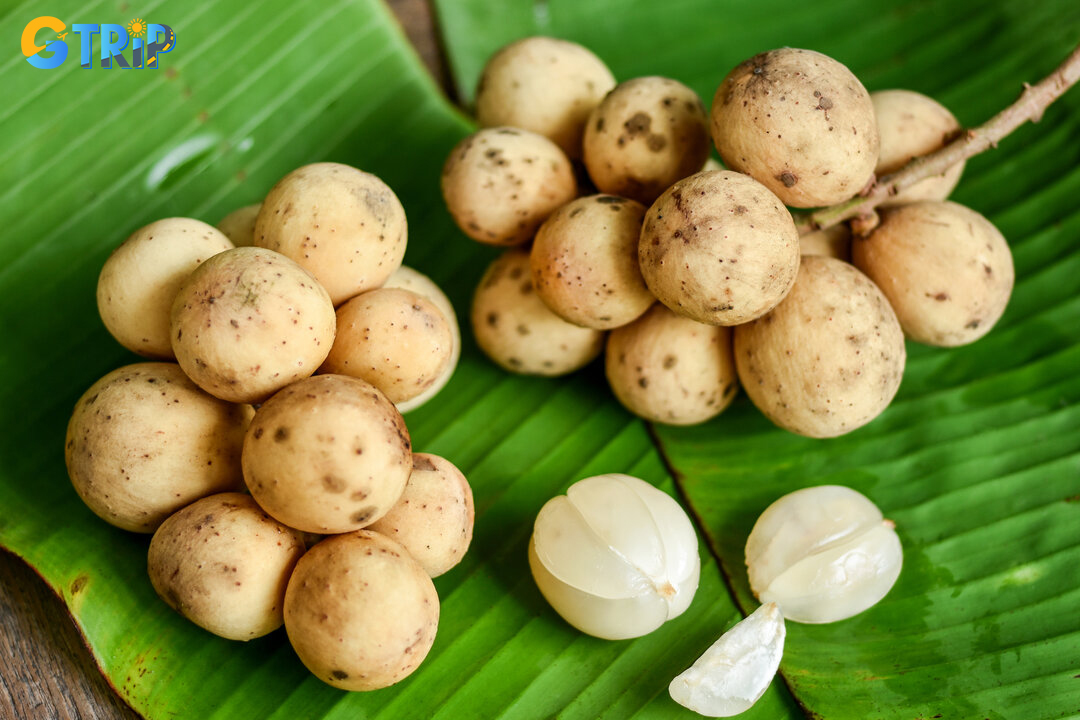
Langsat
Mango
Mangoes have a significant presence in Vietnam, with various native varieties cultivated throughout different regions. The Cat mango, Tuong mango, and Xiem mango are among the most popular varieties grown in Vietnam. In addition to consuming ripe mangoes, there are other ways in which mangoes are enjoyed in Vietnam. You can eat green mangoes as a snack dipped in chili salt and shredded in a savory green mango salad (gỏi xoài).
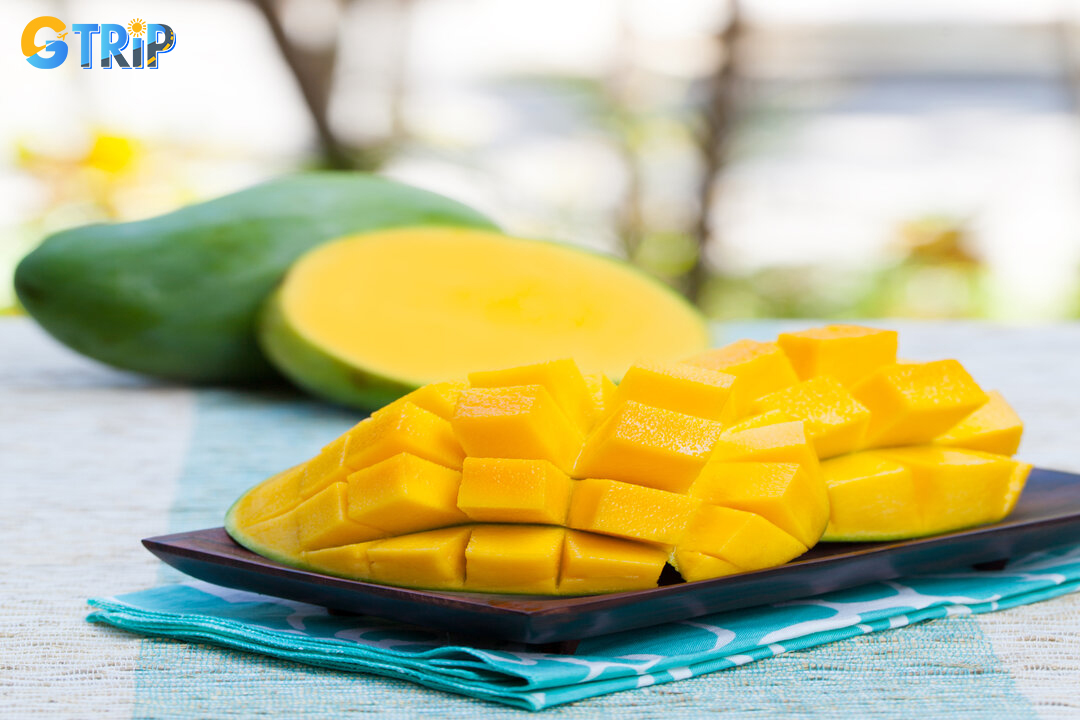
Mango
Summer fruit eating tips
- Most fruits will reach their best flavor when ripe but not yet fully ripe. The types of latex such as mangosteen, durian, ... should be eaten when the fruit is really ripe.
- Fruit provides a lot of nutrients for the body, but it is necessary to choose fresh fruit, eat it right away, and not leave it for too long because if left for a long time, the delicious taste of the fruit will no longer be and the number of nutrients will also decrease.
- All fruits have health benefits but should be selected and coordinated between types in a reasonable way to make the most of them. Most Vietnamese fruits in summer are hot, so don't eat too much to avoid getting sick.
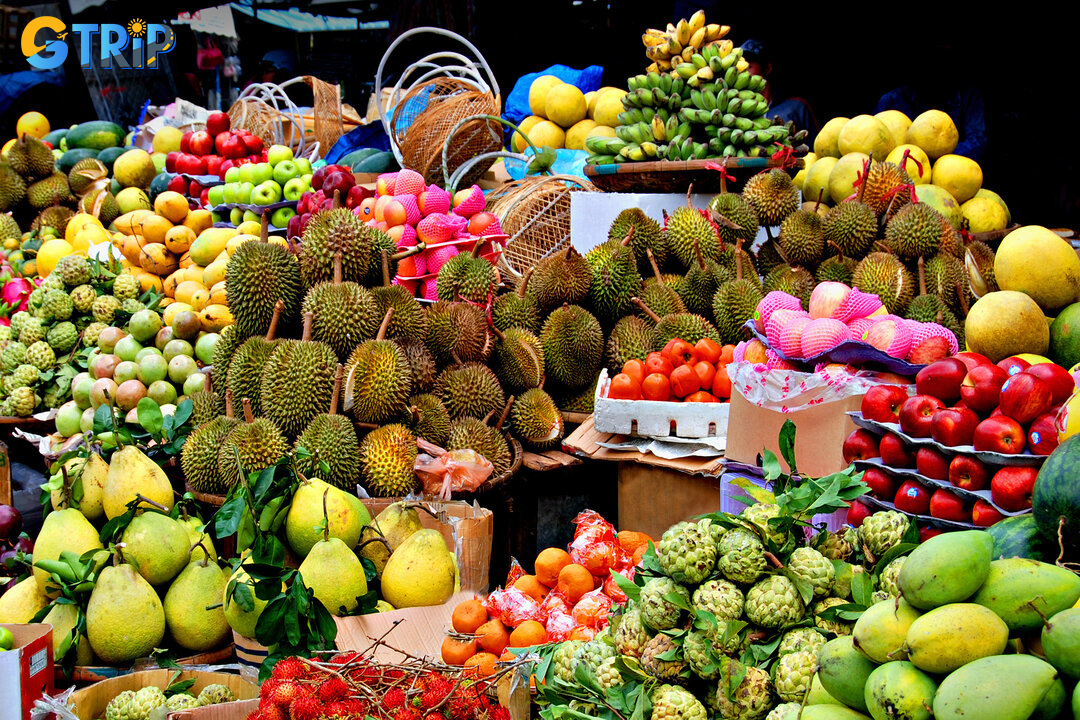
Summer fruits
In addition to the sweltering sun and the first rains of the season, the summer in Vietnam also brings fruits and vegetables with attractive colors and flavors. And the blooming season of these Vietnamese fruits is not long, so when you travel to Vietnam, don't hesitate to enjoy them!





